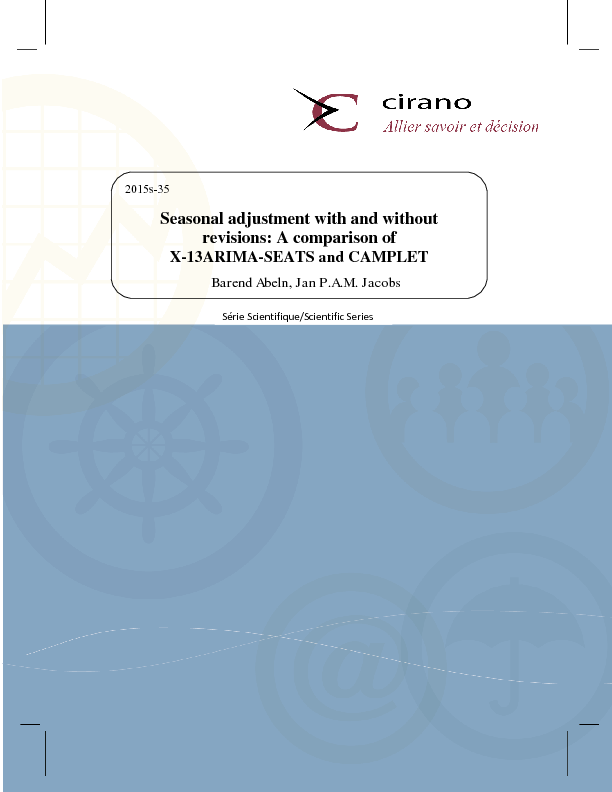Seasonal adjustment with and without revisions: A comparison of X-13ARIMA-SEATS and CAMPLET
Seasonality
in macroeconomic time series can obscure movements of other components in a
series that are operationally more important for economic and econometric
analyses. Indeed, in practice one often prefers to work with seasonally
adjusted data to assess the current state of the economy and its future course.
Recently, two most widely used seasonal adjustment methods, Census X-12-ARIMA
and TRAMO-SEATS, merged into X-13ARIMA-SEATS to become a new industry standard.
In this paper, we compare and contrast X-13ARIMA-SEATS with a seasonal
adjustment program called CAMPLET, an acronym of its tuning parameters. CAMPLET
consists of a simple adaptive procedure which separates the seasonal component
and the non-seasonal component from an observed time series. Once this process
has been carried out there will be no need to revise these components at a
later stage when more observations become available, in contrast with other
seasonal adjustment methods. The paper briefly reviews of X-13ARIMA-SEATS and
describes the main features of CAMPLET. We evaluate the outcomes of both
methods in a controlled simulation framework using a variety of processes.
Finally, we apply the X-13ARIMA-SEATS and CAMPLET methods to three time series:
U.S. non-farm payroll employment, operational income of Ahold, and real GDP in
the Netherlands.
[ - ]




